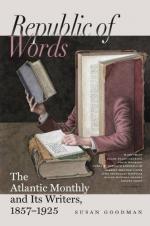Of Mr. Monti’s translation we can speak in high terms of commendation. Success in writing a foreign language is a rare thing, and he has shown a remarkable command of idiomatic expression. His familiarity with the habits and proverbial phrases of his native country gives him, we think, an advantage over any English translator, which more than counterbalances the trifling inaccuracies of phraseology that here and there betray the foreigner, and amount to nothing more than an accent, which is not without its merit of piquancy. In one respect we think he has acted with great discretion, namely, in now and then curtailing the reflections which Guerrazzi has interpolated upon the story to the manifest detriment of its interest and consecutiveness. If Signor Guerrazzi should profit by these silent criticisms, it would be to his advantage as an author.
The Elements of Drawing; in three Letters to Beginners. By JOHN RUSKIN. With Illustrations drawn by the Author. 12mo. London. 1857.
The art of drawing may be called the art of learning to see,—and into this art there is no guide to be compared with Mr. Ruskin. His own admirable powers of sight and of expression have been cultivated by long, patient, and laborious study.
He has learned not only how to see, but what to see, and how best to represent what he sees. A teacher of the most advanced students of Art and Nature, he offers himself now as a teacher of beginners; and this little book of his contains a course of instruction admirably adapted not only to teach drawing, but also to teach the object and end for which it is worth while to learn to draw. “I would rather teach drawing,” says Mr. Ruskin, in his Preface, “that my pupils may learn to love Nature, than teach the looking at Nature that they may learn to draw.” And no one can study Mr. Ruskin’s book without gaining a profounder sense of the infinite beauty and variety of Nature, and of the unfathomable stores of her freely lavished riches,—or without acquiring clearer perceptions of this beauty, and of its relations to the Divine government and order of the world.
Mr. Ruskin’s book is essentially a practical one. His long experience as teacher of drawing in the Working-Men’s College has given him knowledge of and sympathy with the perplexities and difficulties of beginners. It is a book for children of twelve or fourteen years old; and it is especially fitted for circulation in district and school libraries. All teachers of schools, in which drawing forms a part of the course, will find invaluable hints and directions in it. In every case, the English edition—which is easily obtainable, and at a very moderate price—should be procured, not merely for the sake of the original illustrations, but also as a mark of respect and gratitude to the author.
In an Appendix containing many wise and genial directions with regard to “Things to be studied” is a passage concerning Books, which we quote for its coincidence of opinion with our own views expressed in the January Number, and for the sake of enforcing its recommendations.




